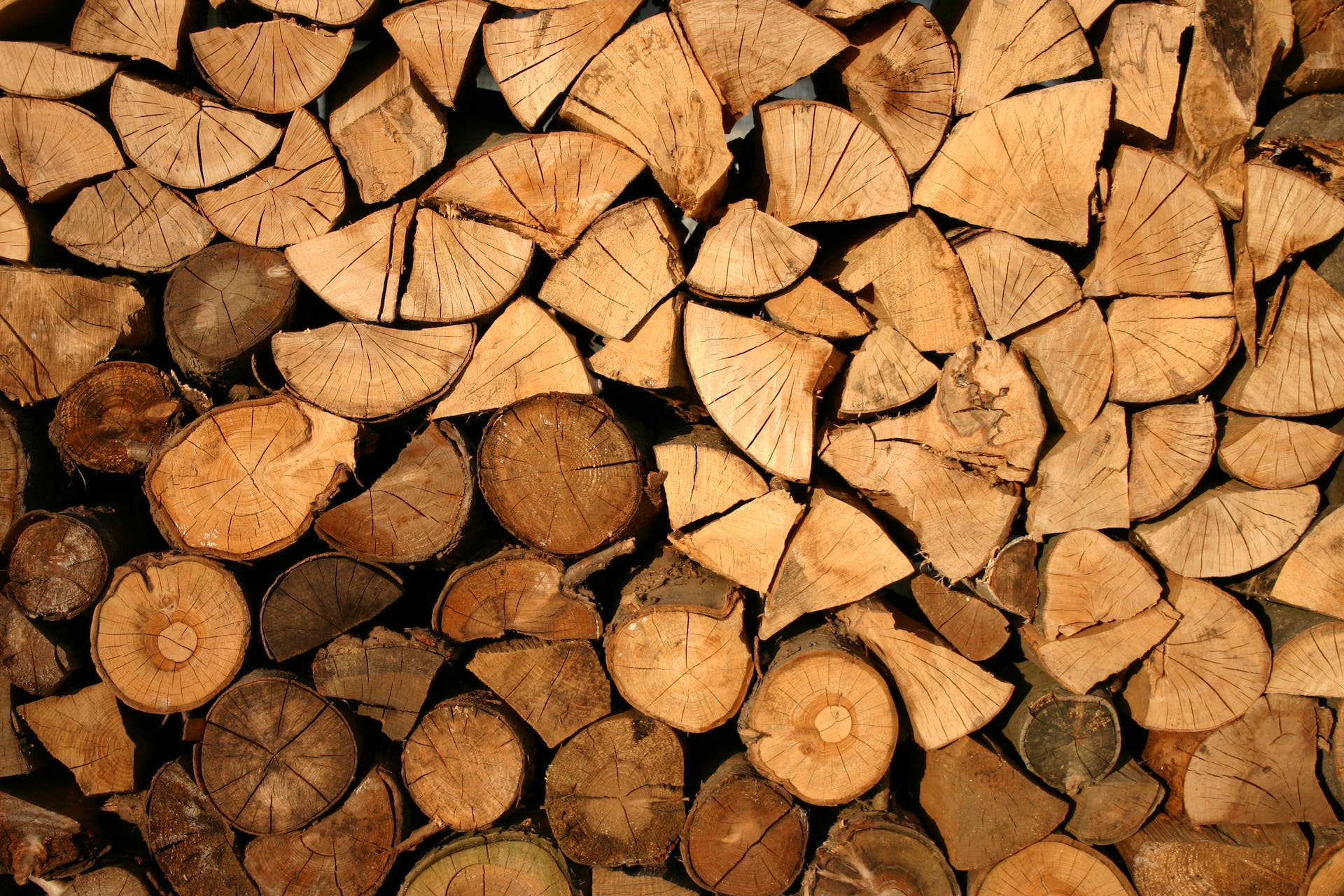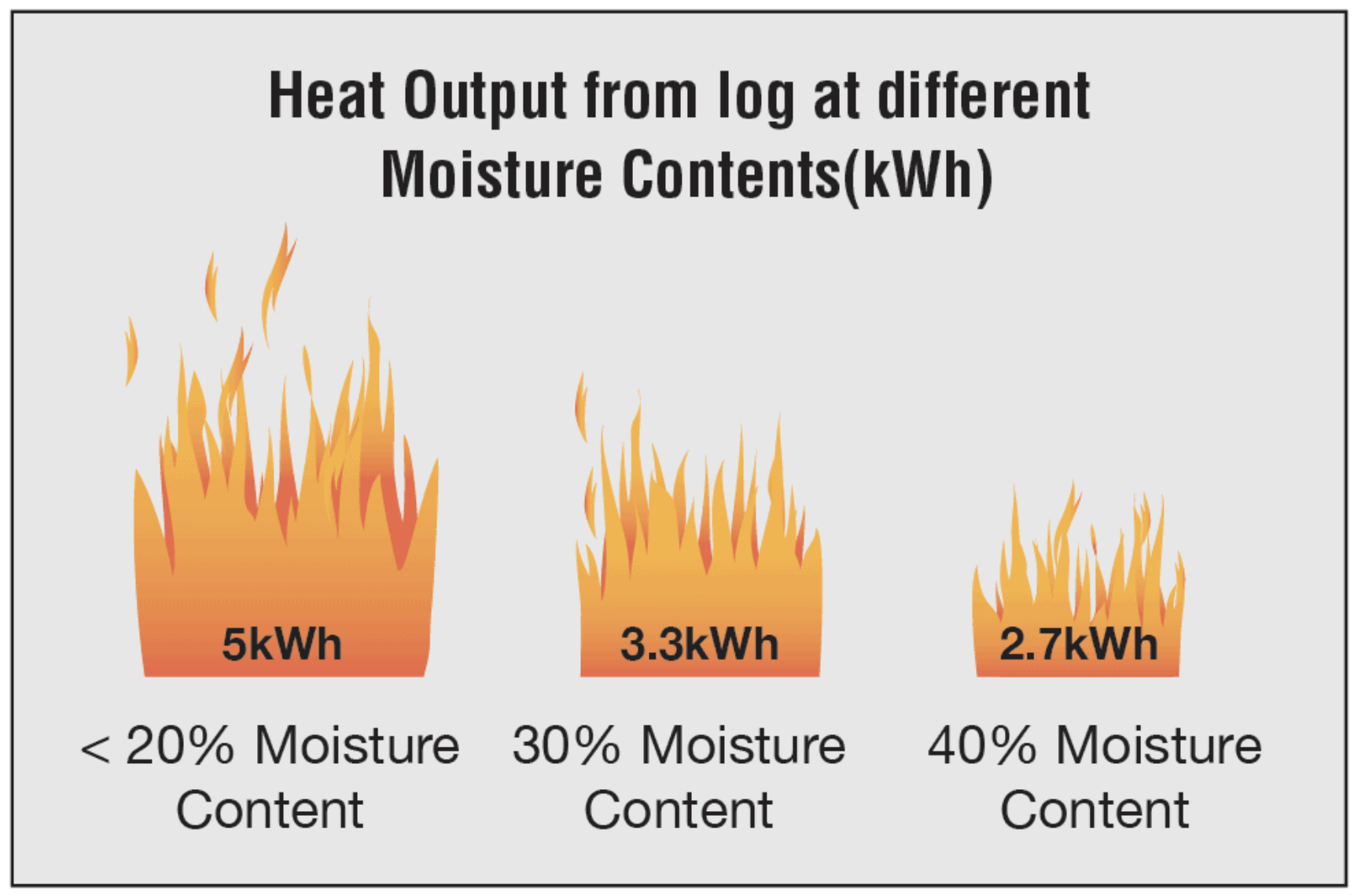Seasoned or Kiln-Dried Wood – What’s The Best?
When it comes to finding the best wood for your stove, you should have a good knowledge of the various woods available. You should decide whether you want to use seasoned wood or kiln-dried wood.
There are significant benefits from burning the right type of wood on your stove. Burning the right type of wood has the following benefits:
- Less in smoke
- Less spitting from the wood (usually sap)
- Less tar build up in the flue
- Reduced chances of blackening of stove window
- You produce a clean burn for a cleaner environment
- A better heat output

Seasoned or kiln-dried – do you know the difference?
The main difference between seasoned wood and kiln-dried wood is actually very little. Technically, well-seasoned logs should be dried to below 20% moisture content.
However, although some sellers may try to tell you the wood is well seasoned, this sadly is not always the case. You will know if “well-seasoned” firewood is not that well-seasoned if it struggles to burn and leaves a blackened window on your stove.
Luckily, since 1st May 2021, the government has been phasing out the sale of wet wood sold in small volumes (under 2m3) in England. Wood products sold in volumes over 2m3 do not need to be certified as Ready to Burn, but they must be sold with advice on drying and an explanation of the issues of burning wet wood. Always look for the Ready to Burn logo (below) on small volumes of logs.

What is Kiln Drying?
Kiln drying is the process of drying wood in a kiln. It is an artificial yet highly effective way of quickly drying out logs. Wood takes between 4 days and a week to be dried with this method. The process of kiln drying sucks the moisture from the wood, as opposed to seasoning, which can happen over 1 to 3+ years, where the wood will naturally release it’s moisture.
Kiln drying also kills insects during the process and requires little stacking space, unlike when you season wood. Also, with kiln drying, the moisture content of wood can be brought down to a specific level. However, the timber that has been kiln-dried tends to be a little weaker when compared to air-seasoned woods and costs more, too.

.
The Conclusion:
.
There is no significant winner. It’s all down to what you want as a stove owner. There are some significant advantages and disadvantages with both seasoned wood and kiln-dried wood. From a commercial perspective, kiln drying can be expensive but very quick, and you can also select the level of moisture. However, it is not that environmentally friendly, and the wood can be a little weaker, too.
Seasoned wood can take a very long time, and uses a lot of space. However, it is cheaper and much better for the environment than kiln drying. You can season wood yourself – all you need is some dry space and of course, wood and plenty of time. Even if you don’t season your own wood, you will tend to find buying ready-seasoned wood is slightly cheaper than kiln-dried wood. To check the moisture level of wood, you should use a moisture meter.








